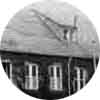 |
THE JOURNEY The Russians had a strong army and on 13 October 1944 the Russians regained power in Riga. Hope was lost and at this crucial time many Baltic people decided to flee their homelands, as they knew they may suffer the same fate as those deported in 1941. It is at this time that Anna Apinis, her father Ernests Strauss, her son Erik and her brother Arnolds with his family flee Latvia. They packed a suitcase with some clothes, photo albums, and some precious reminders of their home. They also decided to bury some of their best silverware in the garden outside their house in case they came back. Leaving from Liepaja port Sadly they departed on 19 October 1944 wondering if they will ever return. Amid chaos and bombing at Liepaja harbour they boarded a ship called Lepland to sail to Germany to Breslau. They stayed here for several months meeting up briefly with Ervins, who had taken a short leave but who then returned to war. Life as Displaced Persons The Allies had organized Displaced Persons Camps all over Germany and when the war ended on 9 May, 1945 Anna and her family were allocated quarters at Memmingen Airforce barracks where they arrived on 17 October 1945. They remained in Memmingen camp for 5 years and it was here that Anna Apinis became involved in the Weaving workshop. She had a carpenter build her a loom and she taught weaving to many women. While in Memmingen Anna tried to find her husband Ervins and whether he was still alive. She received news that he was in an American Prisoner of War camp. Life in a POW camp Ervins was in several POW camps before being released in 1946. In Ervins diary is a grim account of conditions at the POW camp: 3 May 1945- At 12 noon Latvian 15th Division Field Division puts down their arms and go over to the American prisoner of war camp at Ludwiglust 1.5km from Sulstorp. 14 May 1945- Transfer to camp 5km north of Ludwiglust. 27 May 1945- Battalion is transferred by train and truck to Fallingbostel. 19 June 1945- Every 24 hours our rations of food were: 1 Litre soup, 428gm wholemeal bread, 10.7gm butter, 4.3gm cheese, 31gm sugar, 31gm jam or honey 14 July 1945- Doctor's checkup - declared Ervins impoverished suffering from malnutrition 29 July 1945- Transfer 300km west to a camp at Ostfriesland.
|
25 September- Wife Anna and Arnolds come to visit. Have not met since new year in Breslau. 2 October - Visitors leave 11 November - Am transferred to my winter quarters 19 December - Am carving a small wooden train for Erik 22 December - Am carving a fruit bowl for Anna 30 December - Leave Friesland. Change into civilian clothes. 2 January 1946- Are all together again - me, mum, Erik, Opaps, Arnolds, Irena and Modris. Arnolds, Anna's brother, and his wife Irena had a son, Modris and they also were living in the Memmingen camp. When Ervins was reunited with his family, Erik was frightened of this stranger, who suddenly came back into his life. Erik was now nearly 6 years old but had not seen his father since he was one. When the War finished Germany was divided into 4 zones - American, English, French and Russian. Memmingen was in the American zone. Workshops for the camp members were organized by UNRA (United Nations Refugee Association). Anna was involved in the weaving workshop and when Ervins arrived at the camp he learned welding. Planning to leave for Australia At the end of 1949 Ervins and his family were given the opportunity to decide which country to migrate to as Australia, America, England and other countries were taking a certain quota. Anna's brother Arnold decided to go to America with his family but Ervins and Anna decided on Australia as they had a friend living in Melbourne who had come out earlier. They packed items carefully and brought things that they could use for work such as an axe, saw, file chisel and Anna's 1.20 metre wide weaving loom and Ernest's shoe repair items such as an awl, shoe support, needles and clamps. Ervins built 3 wooden boxes for this luggage so that all the items would fit properly. One last requirement was some money and Ervins sold his thick winter coat in Germany for a meagre10 Australian pounds but at least it was something to make a start. Sea passage on General C.C.Ballou Finally the Apinis family and Ernests Strauss left Memmingen in 1950 on 1st February and travelled by train to a transit camp in Baghol near Naples in Italy. Finally on 23 February they boarded the ship the General C.C. Ballou* and set out at 10am and left the harbour at 6.30pm. According to the diary accounts of Ernests Strauss the ship was very clean with good food. They now heard much English used by the crew but did not understand one word. All loudspeaker announcements were made in German as most of the migrants could understand German. Their first stop was in Greece at Piraeus on 25th February to pick up 700 more passengers. On 27th February they arrive in Egypt at Port Said, then moved through the Suez Canal and into the Red Sea on the 1st March along the coast of Africa. Many people were sea sick after a large storm in the Indian Ocean.
*Thank you to Peter Plowman, author of "Emigrant Ships to Luxury Liners" for helping me find a photo of the General C.C. Ballou. |
||
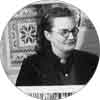 |
||||
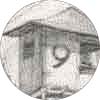 |
||||
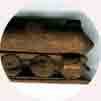 |
||||
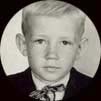 |
||||
 |
||||

|